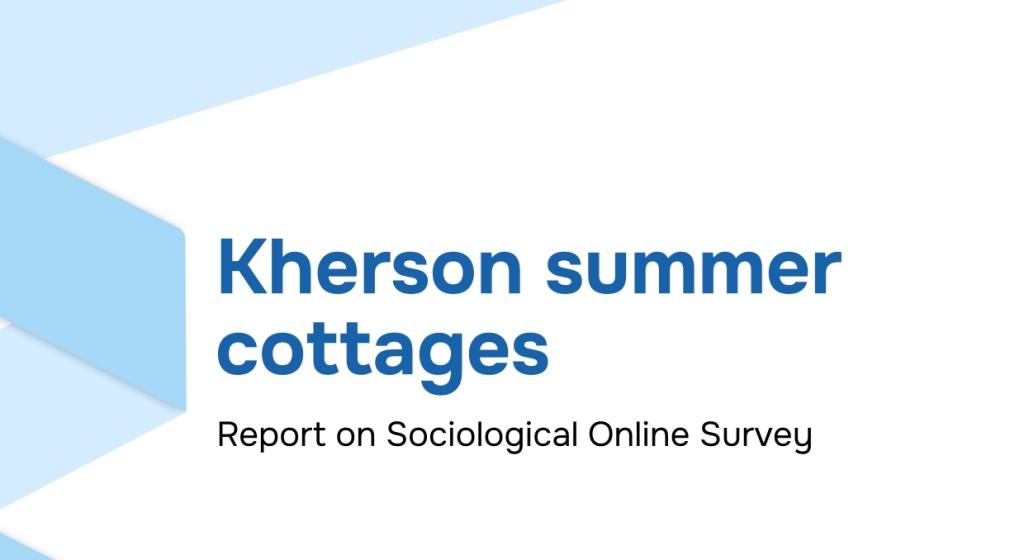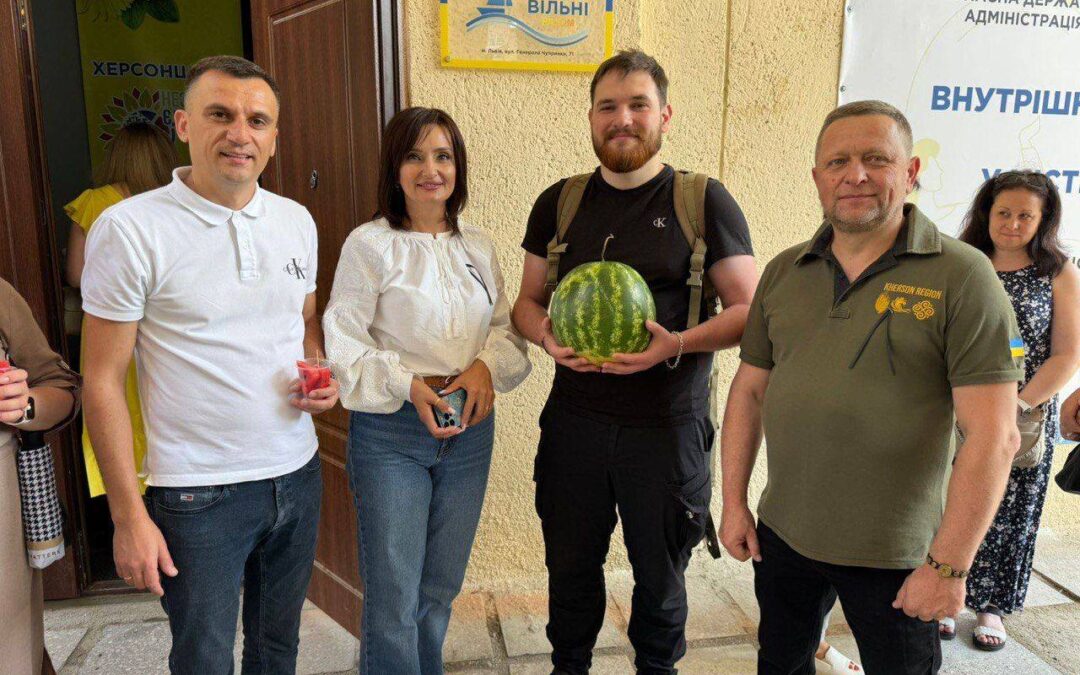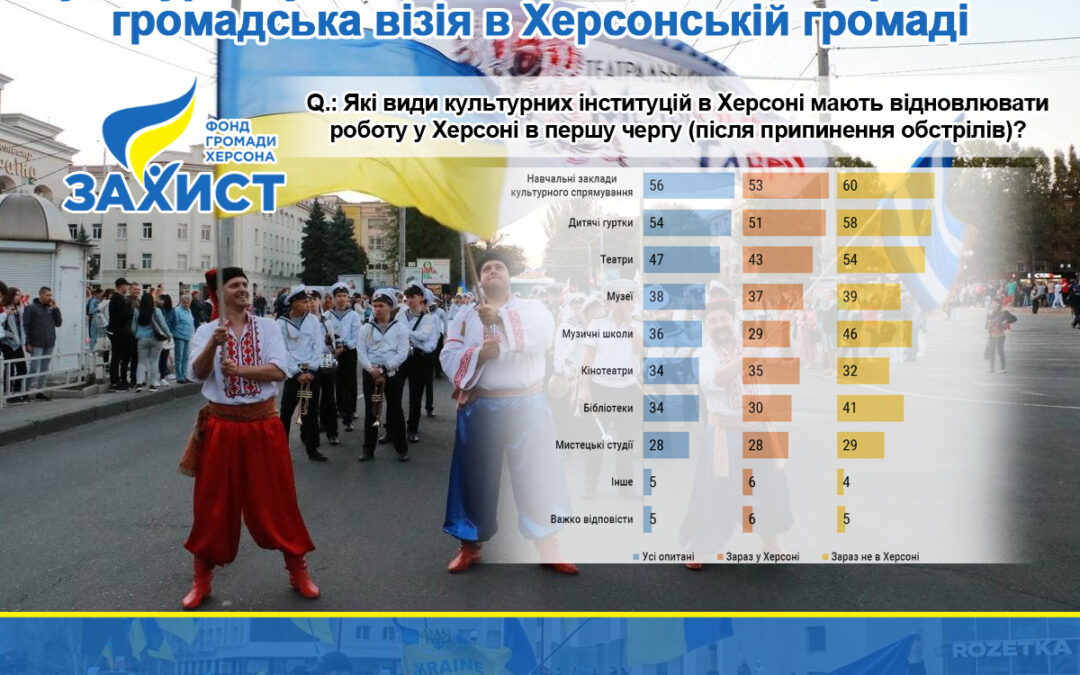Report on Sociological Online Survey/
Methodology: an online survey using an interactive structured questionnaire, a relevant link was sent to potential respondents from the database (online research panel of Kherson community). The sample is based on demographic
indicators as of January 1, 2022. Given the indicators, the research margin of error does not exceed 5%, with a probability of 0.95. The sample includes Kherson residents both currently residing within the community, those who left Kherson after February 24, 2022 to other regions of Ukraine or abroad. Currently, there is no official data on Kherson’s residents’ migration, so it is not possible to assess the given respondent sample representativity. However, there are reasons to believe that the ratio of respondents still residing within the community presented is greater than the de facto one, which may affect the research results.
Research objective: to assess the damage caused to summer cottages and learn the prospects of cottages and cottage cooperatives in Kherson.
Sample scope: 402 respondents.
Field stage period: April 18 – 30, 2024.
Research client: Community Foundation of Kherson «Zakhyst».
Research prepared by: Oleh Sinaiuk (New Image Marketing Group LLP, Director), Mykola Homaniuk (Kherson regional branch of the Sociological Association of Ukraine, Chairman), Ihor Danylenko (New Image Marketing Group LLP, Analyst).
Key Outputs
1. It is impossible to imagine the Kherson community without summer cottages. A summer cottage, by the water, is a kind of Kherson religion. More than half (58% ) of Kherson households owned summer cottages before the full-scale invasion started. For most Kherson residents, summer cottages are both a land plot providing with vegetables and fruits and a
place of rest. However, the traditional status of summer cottages, which developed back in Soviet times, has begun to change. For 19% of respondents, a summer cottage was a place of long-term residence, and 4% of the owners provided services or ran business there.
2. Unfortunately, only 7% of respondents claimed their summer cottages suffered no changes. In 2022-2024, most summer cottages were flooded, destroyed, damaged, robbed, or rigged with explosives. Another 24% noted
they had no idea about their summer cottages’ condition. 84% of respondents have no opportunity to go to their summer cottages. Thus, the issue of summer cottages added another dimension to the Kherson tragedy.
3. However, 80% of Kherson residents (owners of summer cottages) plan to rebuild and return to the cottage lifestyle. 26% of all respondents deem it worthwhile to make use of the situation and limit the reconstruction of destroyed cottages located near the Nyzniodniprovsky National Park followed by reimbursement to their owners. 5% believe that the mined
territories where summer cottages are located can be transferred to the nature reserve fund. Still, generally speaking, 51% of respondents believe that the number and area of nature reserve objects in hazardous territories (rigged with mines or affected by flooding) throughout the Kherson region should be increased.
4. There was an important change as to the future of the Kakhovka reservoir. According to the survey, the number of those who believe that the Kakhovka HPP should be rebuilt in its original state has decreased by 4,25 times compared to October 2023. The latest indicators may show a certain ecological shift in the respondents’ perception: for a significant part of Kherson residents, recovery and reconstruction is not only about “making everything the way it used to be”, but also an opportunity to rethink the community.










You can read the full report by downloading it or read view it in Ukrainian.
This research was conducted by the Zakhyst Kherson Community Foundation Charitable Organization as a part of its project implemented under the USAID/ENGAGE activity, which is funded by the United States Agency for International Development (USAID) and implemented by Pact. The consents of this research are the sole responsibility of Pact and its implementing partners and do not necessary reflect the views of USAID or the United States Government/
Reproducing and using any part of this product in any format, including graphic and electronic, copying or any other usage is suitable to reference to the sourc/




